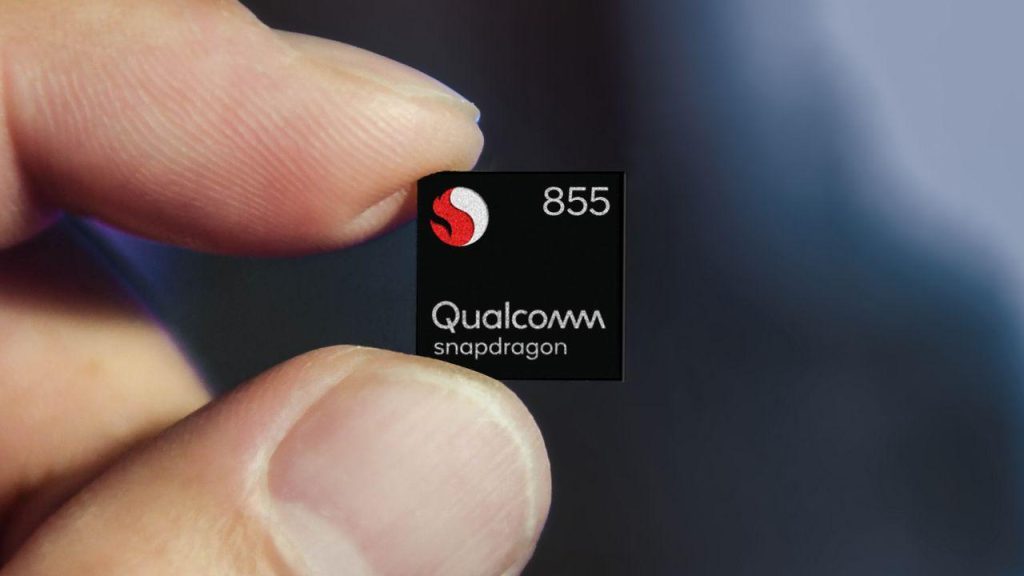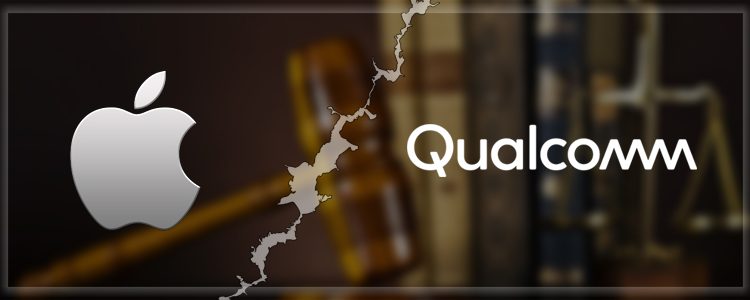Table of Contents
- History
- Linkabit
- Fleet OmniTRACS
- CDMA/Wireless revolution/ QCT-Chips
- Wireless-Patents Inventions
- Brew-Mobile Apps
- Automotive-Wingcast
- ADAS
- Acquisitions
- Qualcomm Smart Cities
- Legal Battles-Apple, Ericson
- Global Clientele-Huawei Samsung, etc. (Korea, North America, China Project-Europe UMTS standard)
- Philanthropy
- Conclusion

History
Key Dates:
- 1965: Irwin Jacobs publishes Principles of Communication Engineering.
- 1968: Irwin Jacobs and Andrew Viterbi found Linkabit.
- 1980: Linkabit merges with M/A-COM to form M/A-COM Linkabit.
- 1985: Qualcomm Inc. is formed.
- 1988: Qualcomm launches the OmniTRACS messaging system.
- 1993: U.S. Telecommunications Industry Association adopts Qualcomm’s CDMA technology as a cellular standard.
- 1999: Qualcomm reaches settlement in a patent-infringement suit with L.M. Ericsson.
- 2002: China Unicom agrees to implement Qualcomm’s CDMA technology.

- QUALCOMM Incorporated (Qualcomm) is a wireless communications company dedicated to the creation of innovative mobile phone systems. Its patented code division multiple access (CDMA) technology is used by telecommunications companies across the globe and has played an integral role in the development of a single international standard for wireless communications. Qualcomm Ventures is an investor in many technology companies as well.
- Qualcomm’s Third Generation technologies have combined mobile communications with Internet and email access, providing cell phone users with a range of data transfer capabilities. This integration of wireless and information technologies remains the company’s primary goal heading into the 21st century.



- Qualcomm began by offering contract research and development services for the wireless telecommunications market, with limited product manufacturing. One of the team’s first objectives was to create a commercial product. OmniTRACS is the result of this endeavor. OmniTRACS has expanded from its inception in 1988 to become the largest satellite-based commercial mobile system for the transportation industry today.
- Qualcomm’s current intellectual property portfolio includes over 13,000 US patents for wireless technologies, that are licensed to more than 180 telecommunications equipment manufacturers globally.
- Qualcomm has grown to manufacture and market semiconductor components throughout the years. It also created semiconductor components and software for automobiles, watches, laptop computers, wireless networks, smartphones, and other devices
Linkabit

- Irwin W. Jacobs and Andrew J. Viterbi’s first telecommunications company, Linkabit, isn’t as well-known. In October 1968, Jacobs, Viterbi, and MIT alumnus Leonard Kleinrock established Linkabit at Kleinrock’s residence close to UCLA.
- Jacobs was contributing to the opening of the brand-new campus at the time by working at the UC San Diego Department of Applied Electrophysics. Prior to 1970, the company’s primary sources of income were from NASA, DARPA, and other government enterprises. Kleinrock left in 1973 to work on the ARPANET, the forerunner of the modern Internet. Then Jacobs relocated Linkabit to San Diego, on Sorrento Valley Road, a freeway exit lower than UCSD.
- The company’s annual revenue increased from $1 to $15 million throughout the six-year period between 1973 and 1979. In 1979, M/A COM Technology Solutions purchased it. The micro-coded multi-satellite terminal, VSATS, the VideoCipher TV scrambler/descrambler, and the first commercial TDMA wireless phone were all created by Linkabit (both independently and as a part of M/A COM after 1980).
Fleet - OmniTRACS

- The OmniTRACS solution is a commercial satellite system that employs a near-real-time two-way satellite-based mobile interactive information management system for data transmission as well as vehicle position tracking and reporting. The system is available and operational today with NO government development expense and ongoing internally supported improvements and expansions.
- Through two-way driver messaging, street-level vehicle tracking, and mapping, the QTRACS solution delivers dynamic fleet and driver management. You will be able to project more precise ETAs with quick access to current and historical tractor/trailer position and status, which can equate to higher load prospects for your business and enhanced customer satisfaction. The
- The QTRACS solution can also provide data to third parties, such as major shippers and consignees, providing them with real-time status and position updates. The QTRACS technology automates your dispatch by connecting data transmitted by Qualcomm systems to your host computer, reducing the need for duplicate entries to a specialized terminal.
Qualcomm CDMA Technologies Wireless Innovations

- The Cellular Telecommunications Industry Association (CTIA) recognized the need for a digital wireless standard to boost capacity and enhance quality to support the development of cellular. In response, Qualcomm presented an innovative and underutilized CDMA-based technology.
- Spread-spectrum techniques, utilized by CDMA, were sophisticated and quite different from the methods used by more well-known access technologies, such as frequency-division multiple access (FDMA) and time-division multiple access (TDMA), to exploit the airwaves (TDMA). With CDMA, a single, high bandwidth channel is shared by many customers with individual codes, greatly enhancing capacity.
- Many operators found it challenging to imagine CDMA, much less think that it could function in the “real world.” It was too new to scale commercially, according to some “experts.” Although CDMA has some great theoretical advantages, there were a number of technological barriers that prevented it from being used for cellular communication. Transmit power, sometimes known as the “near-far dilemma,” came first.
- Anyone further away could be blocked by the transmit power of a CDMA user close to a tower. The “single channel difficulty” was the second obstacle. Devices situated between towers may interfere with users connecting to the other tower if all towers use the same channel. System acquisition time, or how long it took a device to find the network after turning on, was a third problem.

- Qualcomm created technologies including quick power control, gentle handover, and a common pilot signal using GPS to address these issues as well as others. However, TDMA had already made a significant impact by the time Qualcomm released these solutions. As the cellular standard for digital communication, TDMA had been declared by the Telecommunications Industry Association (TIA) and the CTIA.
- As a result of this significant setback for Qualcomm, industry experts predicted an early exit for the business and CDMA; many held the view that CDMA would only be used in the military, satellite communications, or in the academic setting. However, Jacobs and his team thought CDMA would offer significantly larger capacity as well as superior service quality, making it the best long-term alternative for cellular standards.

- This was a significant victory, and soon after, some operators did as well. But Qualcomm was running out of time if CDMA was going to be the digital communication standard in the United States. The difficulty of implementing CDMA made it difficult for cellular phone components to be widely available in volume, which was necessary to turn a regulatory victory into commercial success.
- Although Qualcomm’s primary skill was not manufacturing, the company strategically decided to use its CDMA know-how to design the ASICs that would implement the most difficult aspects of the technology.
Qualcomm launched a joint venture to manufacture mobile phones to further bootstrap the ecosystem, which assisted in persuading the supply chain that CDMA technology was prepared for the mass market. The choice to create its own ASICs and phones paid out in the long run, contributing vital system knowledge that Qualcomm used to gain a dominant position in the cellular modem and processor markets. - Despite an improving market forecast for CDMA, Qualcomm continued to experience difficulties, including a severe cash shortage. The company had an initial public offering (IPO) of stock on December 16, 1991, to generate money, and the price increased by more than 50% in just two weeks. The market’s excitement, however, was short-lived because the CTIA chose TDMA as the preferred cellular standard in January, thereby wiping out the gains from the IPO.
- Despite being dissatisfied, Qualcomm persisted in creating and promoting CDMA. A number of operators in the United States and Korea chose CDMA as their digital cellular technology for 2G by the end of 1993 after the TIA adopted it. GSM was the 2G digital standard used in Europe. It was created by the European
Telecommunications Standards Institute (ETSI) and adopted as a requirement by 13 European nations in 1987.
QCT-Chips

- In December 2007, the Snapdragon QSD8250 was released. It included the first 1 GHz mobile phone CPU. Qualcomm’s “Krait” microarchitecture was introduced in the second generation of Snapdragon SoCs in 2011, allowing each CPU core to alter its speed dependent on the needs of the device.
- Qualcomm launched the first model of the Snapdragon 800 series at the 2013 Consumer Electronics Show, renaming previous versions of the 200, 400, and 600 series. Since then, several new models have been released, including the Snapdragon 805, 810, 615, and 410.
- Companies like ASUS, Black Shark, iQOO, Lenovo, Meizu, OnePlus, OPPO, Qualcomm, Realme, Samsung, Sony, Vivo, Xiaomi, and ZTE have already launched their smartphones that are equipped with the Qualcomm Snapdragon processors.
- Acer, Lenovo, and HP use Qualcomm Snapdragon chipsets for their premium laptops.
Wireless 4G/5G Chip competitors
Qualcomm’s QCT business segment designs and provides software and other technologies that are used in smartphones and other devices including tablets, gaming devices, laptops, routers, data cards as well as consumer electronics and vehicle entertainment systems.
- This segment competes directly with major names including Apple, Huawei, HTC, Nokia, and Samsung in mobile phone technology. It also competes with the likes of MediaTek and Samsung in the semiconductor market. Since Qualcomm is involved in making chipsets for electronic devices and peripherals, it is also directly competing against AMD, Intel, and Nvidia.
- Apple, Google, Mediatek, and Samsung have been designing their own chips to customize the performance and functionality of their devices.
- Apple has been designing and manufacturing its own chips for the past several and these chips are used in its latest devices. The recently launched iPhone 14 pro comes with their latest A16 bionic chipset which is considered one of the most powerful and efficient chipsets in the market. Apart from A series chips, Apple designs pretty much their own silicon for Ipads, MacBook’ and even their latest earpods.
- The $599 Pixel 7 and $899 Pixel 7 Pro are the first phones to run on Google’s new Tensor G2 chip. It shows Google is continuing to build its own chips instead of using a chip from Qualcomm, which it ditched last year when it launched the Pixel 6 and Pixel 6 Pro. The Tensor processor helps enable features that Google said it couldn’t provide otherwise, such as increased camera functions, on-device translation and more.
- Samsung, though one of the largest customers of Qualcomm snapdragon chipsets, manufactures its own chips known as Exynos chips. These chips are present in Samsung phones outside the US.
3G and the Mobile Internet
- When the ITU finalized the specifications for IMT-2000, also referred to as “3G,” CDMA’s status as the favored technology was recognized outside of the United States and Korea. As part of 3G, Qualcomm created the cdma2000 standard, an enhanced version of CDMA with faster and more capacity.
- Wideband CDMA, a 3G CDMA standard, was created by Europe and Japan (WCDMA). Although the CDMA2000 and WCDMA differed slightly, the two standards committees tried to unify important elements. Qualcomm’s original objective was realized after years of technological investment and development when CDMA became the accepted global cellular standard.
- In the 1990s, voice calls dominated the cellular industry, but Qualcomm had already started laying the groundwork for high-speed data applications. To support high-speed mobile broadband services, “Evolution data optimized” (EV-DO) established an IP packet-based network design. EV-DO departed from the circuit-switched standard that had long been used for telephone service and instead used networking technology from the computer sector. EV-DO introduced a feature known as “opportunistic scheduling,” which is still utilized in cutting-edge cellular technologies.
- Smaller data packets are exchanged “opportunistically” between a device and the base station when the radio conditions are ideal in opportunistic scheduling. an improvement that allows mobile terminals with EV-DO to connect to the network via various RF carriers. Qualcomm intended to turn the mobile phone into a handheld computer by fusing the cellular modem with a potent processor and graphics to make these capabilities possible. The integration of critical components into high-speed packet access confirmed the EV-DO structure’s success (HSPA).
4G and the SmartPhone
- As these industries came together, the growth of phone, broadband internet, and other data services presented potential for new services and much greater capacity to serve them. As the cellular modem, embedded camera, graphics, and multimedia were combined to provide multimedia applications, low power computing became increasingly crucial. When Qualcomm initially introduced mobile devices with integrated, low power computing in 2002, they expected this additional capacity.
- Higher data rates – well over 50 Mbps – and faster connection times were the driving forces that led to the 4G era. Smartphones, such as the iPhone, and the apps they spawned required higher data capacity. Additional antennas were integrated for both uplink and downlink, introducing the use of MIMO to significantly increase data speeds by creating multiple orthogonal data streams, called layers. MIMO could improve spectral efficiency without requiring more spectrum, scaling the network to support higher data speeds.
- With the launch of 4G in 2010, operators had the ability to expand their business models as wireless internet service providers by combining those services with their existing 3G networks. According to the requested service and location, operators were able to assign the most suitable access technology, such as 3G CDMA, 4G, Bluetooth, or Wi-Fi, thanks to the convergence of networks and devices that support both CDMA and OFDM. Users enjoyed a more smooth experience as a result.
- A “connected world” with billions of devices connecting, exchanging data, and enabling consumers to experience lifestyle changes never before possible was made possible by the rapid spread of 4G.
- The phrase “internet of things” (IoT) was created as consumers discovered they could connect to objects in their environment via cellular IoT connections in their homes, places of employment, vehicles, energy infrastructure, farms, hospitals, and retail establishments. Uber and Lyft are two frequently mentioned examples of how 4G’s all-IP design, inherent security, and quick worldwide adoption encouraged application developers to build cutting-edge mobile enterprises.
5G Revolution
As the next mobile standard following 4G, 5G is intended to deliver greater connectivity than ever before. 5G allows ultra-high-speed connections that are more reliable, perform better, and have lower latency. These capabilities will enable a world in which everyone and everything is intelligently connected, allowing for new businesses, new services, and immersive experiences for end users.
- Qualcomm pioneered the fundamental technologies that enable 5G to function, and our unified technological roadmap allows us to scale and lead the worldwide spread of 5G across industries.
- Qualcomm is a leader in the advancement of 5G to power the connected intelligent edge and enable the cloud economy. Building on its broad 5G RAN portfolio, Qualcomm is at the heart of advancing the cellular ecosystem and accelerating the innovation cycle to fast-track the deployment of modern 5G networks at scale.
Manufacturing Mobile Phones
Qualcomm has been one of the main suppliers of smartphone chipsets. These chipsets range from midrange to flagship chipsets with the best specs known at the time of their launch. While most Android phones use Qualcomm Snapdragon chipset, Qualcomm manufactures smartphones.
Future of Qualcomm
- To meet the rapidly increasing demand for and complexity of AI processing, the Snapdragon team announced dramatic improvements to silicon and architecture to keep their OEM customers competitive in world of AI computing. Snapdragon announced its seventh generation AI Engine that leverages the 8 Gen 1’s heterogeneous compute architecture and expanded shared memory to more efficiently (70% better performance per watt) handle AI workloads with 4 times the performance from the previous generation 888.
- Snapdragon also announced important enhancements to their developer tools for AI and neural processing SDK, namely their partnership and integration with Google Cloud’s Neural Architecture Search (NAS). The Vertex AI NAS uses AI to select the optimal ML models for an OEM’s specific device configuration.
- This not only speeds up the DevTest process for tuning ML models for the hardware they will run on, but also improves the performance of models across the diverse Android OEM ecosystem that uses Snapdragon chips. This same tooling can be used to optimize ML models for Snapdragon platforms for automotive, XR, PC, IoT, and more.
Wireless-Patents QTL

- In February 2015, Qualcomm rebranded its modem products as Snapdragon. In 2018, Asus, HP, and Lenovo began offering laptops with Snapdragon-based CPUs running Windows 10 under the label “Always Connected PCs,” marking Qualcomm and the ARM architecture’s entry into the PC industry.
- Qualcomm Snapdragon is a line of system-on-a-chip (SoC) semiconductor components manufactured and marketed by Qualcomm Technologies Inc. for mobile smartphones. The ARM architecture is used by Snapdragon’s central processing unit (CPU). A single SoC may include multiple CPU cores, an Adreno GPU, a Snapdragon wireless modem, a Hexagon digital signal processor (DSP), a Qualcomm Spectra image signal processor (ISP), and other software and hardware to support a smartphone’s GPS, camera, video, audio, gesture recognition, and AI acceleration.
- As a result, Qualcomm refers to Snapdragon as a “mobile platform” regularly (e.g. Snapdragon 865 5G Mobile Platform). Snapdragon semiconductors are found in devices running a variety of operating systems, including Android, Windows Phone, and netbooks. They are also utilized in automobiles, wearable devices, and other electronic products. The Snapdragon range comprises modems, Wi-Fi chips, and mobile charging technologies in addition to processors.
- In 2021, the World Intellectual Property Organization (WIPO)’s annual World Intellectual Property Indicators report ranked Qualcomm’s number of patent applications published under the PCT System as 5th in the world, with 2,173 patent applications being published in 2020 This is a decrease from its prior ranking of fourth in 2019 with 2,127 applications.
- Qualcomm had over 130,000 active or pending patents in 2017. [This is an increase from the early 2000s when Qualcomm had over 1,000 patents.] Qualcomm’s patent portfolio comprises much of the intellectual property that is critical to CDMA technologies because it was the lone early investment in CDMA research and development.
- Qualcomm is an innovative business that tackles fundamental technological problems that are at the heart of daily living. Did you know that our technology is used in almost every cell phone on the planet? By pushing the boundaries of connection, artificial intelligence, virtual reality, and other technologies, we make our linked world—and future—possible.
Brew-Mobile Apps

BREW applications are mobile applications designed for Qualcomm’s BREW platform. (BREW is an acronym for Binary Runtime Environment for Wireless.) BREW is incorporated directly into the mobile device’s hardware and serves as an API (Application Programming Interface) to access the GSM or CDMA chip sets that use it.
- BREW is a cross-platform application runtime environment designed for use in mobile device wireless applications. It serves as a bridge between the application and the mobile device’s on-chip operating system.
- The initial step in building BREW applications is to download the BREW Software Development Kit (SDK) from Qualcomm’s website and register as a developer online. BREW developers can use a variety of programming languages, including C, C++, and Java. The freely available BREW SDK contains a BREW emulator or simulator that can be used to test programs written in C (or another comparable language) while they are being developed.
- However, before these applets can be delivered to end users, they must undergo stringent tests in a certification laboratory. One disadvantage of BREW is that certifications are not free, and the procedure frequently extends the time it takes to commercialize the produced application.
- The deployment of BREW applications again is a downside to developers since it is a process that is jointly done by Qualcomm and the telecommunications company. This method attributes heavy reliance on Qualcomm and the carrier.
Automotive-Wingcast

Wingcast Inc. is a joint venture formed by Ford Motor Company and QUALCOMM Incorporated. The Company develops and delivers wireless mobility and information services that bring voice, entertainment, Internet access, and safety services into cars and trucks. Wingcast provides telematics services to global customers.
ADAS

- Snapdragon Ride intends to address the complexity of autonomous driving and ADAS by leveraging its high-performance, power-efficient hardware, industry-leading artificial intelligence (AI) technologies, and pioneering autonomous driving stack to provide a comprehensive, cost-effective, and energy-efficient systems solution.
- The unique combination of Snapdragon Ride SoCs, accelerator, and autonomous stack provides automakers with a scalable solution designed to support three industry segments of autonomous systems: L1/L2 Active Safety ADAS for vehicles with automatic emergency braking, traffic sign recognition, and lane keeping assist functions; L2+ Convenience ADAS for vehicles with Automated Highway Driving, Self-Parking, and Urban Driving in Stop-and-Go traffic; and L4/L5 Fully autonomous systems.
- Based on the Snapdragon family of automotive SoCs and accelerators, the Snapdragon Ride Platform is comprised of scalable and modular heterogeneous high-performance multi-core CPUs, energy-efficient AI and computer vision (CV) engines, and an industry-leading GPU. The platform, which consists of SoCs and accelerators, may be used to address any market sector while providing industry-leading thermal efficiency, ranging from 30 Tera Operations Per Second (TOPS) for L1/L2 applications to over 700 TOPS at 130W for L4/L5 drives.
- As a result of this platform, designs can be passively or air-cooled, lowering costs and enhancing reliability by eliminating the need for expensive liquid-cooled systems, allowing for simpler vehicle designs, and extending the driving range of electric vehicles. The Snapdragon Ride SoCs and accelerator are intended for ASIL-D systems’ functional safety Qualcomm describes the new platform as “the automotive industry’s most advanced, scalable and open autonomous driving solution.” That’s a big statement and a big way to start off, right?
- The platforms overall purpose is to enable automakers to better address the increasing complexity of autonomous driving. These complexities are big, ranging from the variance of needs from L1 to L5, internetworking across heterogeneous modules, connectivity to the dashboard, and to the telematics and now a connected cloud system.
- Mercedes is the latest brand to use Qualcomm’s Snapdragon platforms to power its vehicles’ digital cockpits and telematics system, joining Stellantis, Hyundai, Renault, Volvo, BMW, and Volkswagen.
Acquisitions
Qualcomm has acquired 39 companies, including seven in the last five years. Private equity firms were responsible for four acquisitions. It has also sold five assets.
- Qualcomm’s largest acquisition to date was Atheros Communications for $3.1 billion in 2011. Its greatest publicly disclosed transaction happened in 2013 when it sold Omnitracs to Vista Equity Partners for $800 million. Qualcomm has acquired in eight different US states and ten different nations. Software (36%) and semiconductors (22%) are the main targeted sectors for the company.
Notable acquisitions include:
- Atheros Communications: In May 2011, Qualcomm completed its acquisition of Atheros Communications for a total of US$3.7 billion. Atheros became a subsidiary of Qualcomm under the name Qualcomm Atheros. The acquisition enabled Qualcomm to expand its presence in existing businesses and grow into a variety of adjacent businesses including home, enterprise, and carrier networking.
- Nuvia: Qualcomm bought Nuvia, founded by former Apple chip architects, to reboot its efforts to make custom computing cores that would be different from standard Arm designs used by rivals such as Taiwan chip designer MediaTek Inc.
Qualcomm Smart Cities

Connecting the cities of the future.
Qualcomm said that its smart city and internet of things (IoT) ecosystem now has more than 400 innovative businesses participating as it approaches the third year of its Qualcomm Smart Cities Accelerator Program.
- System integrators, hardware and software providers, cloud solution providers, design and manufacturing firms, and others make up the organization, which is dedicated to offering smart end-to-end solutions for modern cities, places, and enterprises.
- Qualcomm announced a number of IoT announcements today in La Jolla, California, during its third annual Smart Cities Accelerate event. With the expansion of the Qualcomm Smart Cities Accelerator Program and the momentum of the Qualcomm IoT Services Suite, the business claims to be continuing to lead the IoT ecosystem.
- A comprehensive strategy of delivering IoT-as-a-service through a massive ecosystem is assisting industries and cities in adopting end-to-end smart solutions, allowing for easier, faster, and more cost-effective management and deployment of smart spaces across industries such as education, logistics, health care, transportation, inspection, energy, agriculture, and others.
- Qualcomm’s worldwide president of smart cities, Sanjeet Pandit, told VentureBeat that the company is enabling IoT-as-a-service through its services portfolio.
- “Because this was such a fragmented market, the first thing we did was build a smart city accelerator program,” Pandit explained. “I’m sorry about the analogy. But I’d call this the Match.com of smart cities, because we’re bringing everyone together under one roof. And the ecosystem is fostered by getting everyone to know one other and cooperating with one another.”
- The event included a discussion with Earvin “Magic” Johnson and city mayors, including Tishaura Jones of St. Louis, Sam Liccardo of San Jose, and Francis Suarez of Miami, who came together to discuss their visions for smart cities, the technologies required for post-pandemic communities, closing the digital divide, and collaborating with companies.
Legal Battles

- Apple had a problem with Qualcomm’s licensing rates, and this could be the reason. Unlike other companies, Qualcomm licenses all of its patents collectively as a group. As a result, for a charge (often dependent on the retail price of the end product, generally a phone), the device maker can use all of Qualcomm’s technologies.
- This licensing strategy is common in the mobile sector; numerous companies, including Ericsson, Huawei, and Samsung, charge license costs depending on the entire device.
- The case between Apple and Qualcomm over patent licensing terminated in April 2019, and all global litigation ceased. For two years, the two businesses had been fighting in courts in the United States, China, Germany, and other nations.
- Apple first sued Qualcomm for $1 billion in the United States, but just $145 million in China. During the legal proceedings, Apple built the iPhone XS with Intel modems.
Customers
- Apple, Ericson, Oppo, Vivo, Samsung, Xiaomi, and Huawei are Qualcomm’s top customers, accounting for more than 10% of its revenue last year. It has previously faced revolts and litigation from a number of those customers over licensing fees, but those concerns have been mostly settled. Qualcomm, unlike many other chipmakers, was also granted a special license to continue selling chips to blacklisted businesses such as Huawei.
- Qualcomm, in addition to smartphone manufacturers, provides networking solutions and ADAS chips to large corporations worldwide. Company 5g innovation has significantly enhanced its revenue.
Philanthropy

Qualcomm has a long history of philanthropic and community involvement. The company continues to evaluate ways to scale that commitment. To support global communities, Qualcomm has donated to the following efforts and remains committed to providing monetary and in-kind donations throughout and beyond this crisis.
Organizations that Qualcomm has supported with monetary and in-kind support include
• Bhumi
• Cal Coast Cares Foundation – San Diego Small Business Relief Fund
• Center for Disaster Philanthropy
• Charities Aid Foundation America – Banco de Alimentos Associacao Civil
• Charities Aid Foundation America – Flexport.org Fund
• Charities Aid Foundation America – Italian Red Cross
• Charities Aid Foundation America – Italian Red Cross Milan
• Charities Aid Foundation America – Portuguese Red Cross
• Charities Aid Foundation America – Rise Against Hunger Philippines
• Charities Aid Foundation America – Spanish Red Cross
• China Red Cross
• CHORD
• Democracy Builders Fund Inc
• Georgetown University
• Give India
• Give2Asia – Lentera Kesehatan Nusantara Foundation
• Hand-In-Hand
• Harisu Dala
• Indian Council for Medical Research
• Nirmaan
• Prime Minister COVID Relief Fund
• San Diego Unified School District
• Silicon Valley Community Foundation – COVID-19 Regional Response Fund
• The San Diego Foundation – COVID-19 Community Response Fund/Jacobs & Cushman San Diego Food Bank
• United Nations Foundation – COVID-19 Solidarity Response Fund for WHO
• United Way Hyderabad
• US Chamber of Commerce Foundation
• US India Friendship Alliance
• Vista Unified School District
Conclusion
In conclusion, Qualcomm stands as a beacon of innovation and excellence in the realm of wireless technology, continually pushing the boundaries of what’s possible in connectivity and communication.
Through relentless research, development, and collaboration, Qualcomm has solidified its position as the world’s leading wireless technology innovator, powering the devices and networks that shape our digital lives. With a legacy of groundbreaking advancements and a commitment to driving the future of mobile technology forward, Qualcomm remains poised to revolutionize industries, empower individuals, and connect the world in ways previously unimaginable.
Qualcomm has been a technology innovator for many years, monetizing R&D on two fronts: marketing smartphones and other smart devices for sensors, and paying patent licensing. Historically, the licensing company has generated about two-thirds of Qualcomm’s revenues despite investing far less than the chip sector. Nothing lasts forever—certainly not patents. Qualcomm has greatly enjoyed cleverly integrating its semiconductor business and patent portfolio, but now that the jig is complete, it must adjust to its new paradigm.
Deepak Wadhwani has over 20 years experience in software/wireless technologies. He has worked with Fortune 500 companies including Intuit, ESRI, Qualcomm, Sprint, Verizon, Vodafone, Nortel, Microsoft and Oracle in over 60 countries. Deepak has worked on Internet marketing projects in San Diego, Los Angeles, Orange Country, Denver, Nashville, Kansas City, New York, San Francisco and Huntsville. Deepak has been a founder of technology Startups for one of the first Cityguides, yellow pages online and web based enterprise solutions. He is an internet marketing and technology expert & co-founder for a San Diego Internet marketing company.



